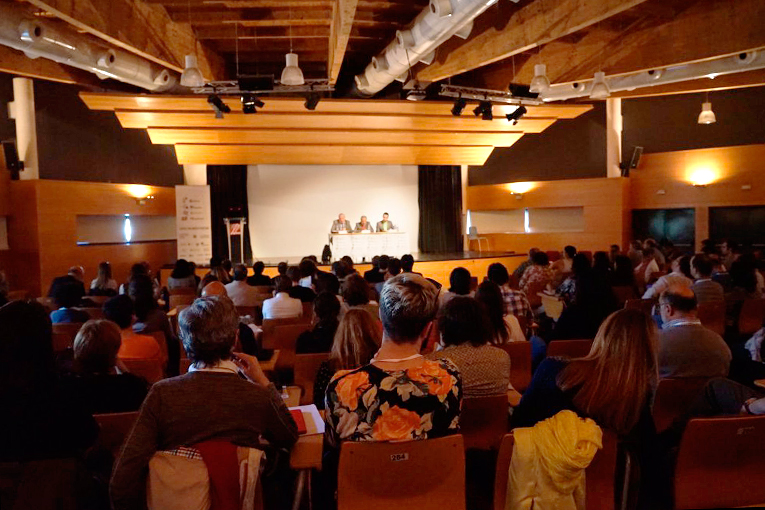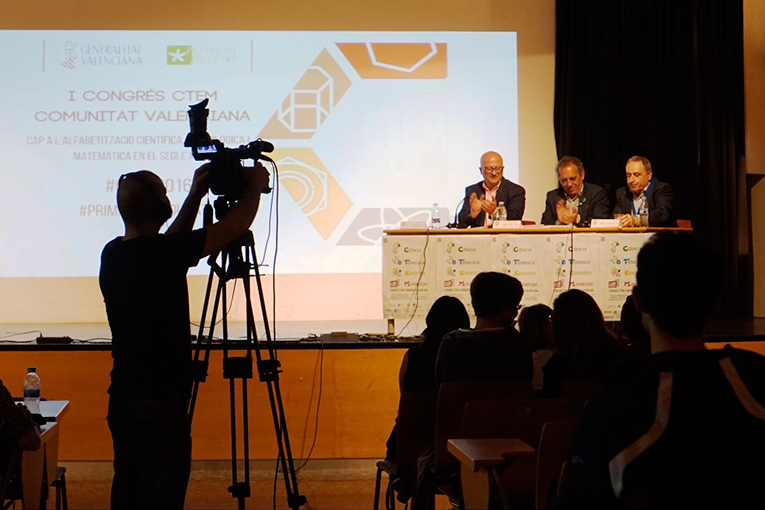

Hundreds of teaching professionals shared their experiences and looked for innovative alternatives to improve scientific training at the I CTEM Congress (Science, Technology, Engineering and Mathematics) in the Valencia region. Their goal: to achieve «science, mathematics and technology literacy in the twenty-first century», both inside secondary school classrooms and out of them. The Benlliure High school of Valencia opened its doors on 13, 14 and 15 May to become a nest of science dissemination for a weekend.
The conference, part of the Primavera Educativa (educational spring) and organised by the Department of Education of the Valencian autonomous government, tried to build a bridge between society and science. Why do young people not pick science in their higher studies? Why does the education system have difficulties to convey scientific knowledge? Why is science culture so rare? These are some of the questions that researchers, professors and communication professionals discussed in order to overcome the main obstacles that science and society face when there is no feedback between them.
Professionals from all over the Valencia region were present at the conference. Round tables buzzed with ideas for a richer education and a more educated population. One of the main conclusions was the need for better teacher training. In addition to encouraging scientific dissemination towards wider social backgrounds, the CTEM conference kicked off this initiative. There was a lot of talk about sharing experiences and strategies. These kinds of activities are important because, through these projects, teachers are provided with the most suitable methodology to teach science.
José Azkárraga, member of the CTEM organisation committee and professor at the Department of Experimental and Social Sciences Teaching of the University of Valencia, explained in an interview with Mètode how important is that the population has basic scientific knowledge. To build a bridge between science and society is a complex task. The CTEM has been the first step of a long path.
This was the main topic addressed in the conference by Martí Domínguez, writer, biologist, professor at the University of Valencia and editor-in-chief of Mètode Science Studies Journal. He is a man of letters, but also a scientist of letters, living proof that culture finds its way through any field. Science is a method to analyse reality, but all the other disciplines are part of this diverse reality. Therefore, in the journal directed by Domínguez there is also place for artists, philosophers and professionals from very different fields.

However, there will not be any scientific culture or society if there are no people devoted to science. One of the main concerns of teachers is the reduced number of youngsters that choose the scientific adventure as a professional career. Scientific studies do not guarantee a job anymore and, as a consequence, less students pick a scientific degree. Two main points of conflict were discussed at the CTEM: the scarce work done to communicate science, which should be accessible and understandable to the greater part of society, and the fact that culture and science are disconnected concepts – science is understood as a study field, but not as part of a personal cultural background.
«No one has asked if this profession is worth it because it makes me happy… We need to explain them that it does», José Pío Beltrán said. He is a research professor of the Spanish National Research Council (CSIC) at the Institute for Plant Molecular and Cellular Biology (IBMCP), a centre that belongs both to the CSIC and the Polytechnic University of Valencia (UPV). «This career path gives you the chance to take part in the process of creating knowledge», he remarked. In order to extend this love for science, this researcher exposed several projects that went from cultural activities aimed at adults, to school games to learn in a fun way during secondary education. For instance, they will create a new centre of biology studies at the Plaça de la Mare de Déu in Valencia, a space that will be permanently dedicated to science dissemination and open to all citizens.
The attendees discussed how to overcome the obstacles and face new communication challenges. The correct application of science to our daily lives comes in hand with science spreading to other cultural spheres and a good education in science. The first step to build a bridge between science and society has been taken. This has been the CTEM of the Valencian region.
Marta Navarro. Journalism student at the University of Valencia.
© Mètode 2016.





